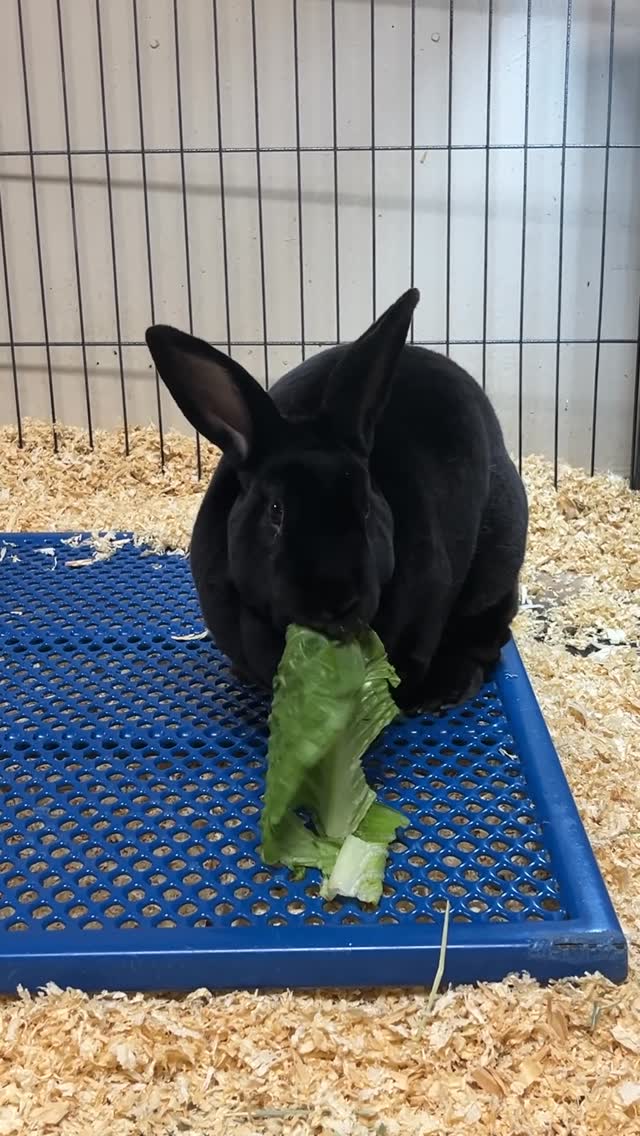- The science behind human and animal chewing noises
- Distinctive characteristics of bunny chewing sounds
- The psychological and emotional effects of chewing noises
- The role of animal sound appreciation in wildlife conservation
- Opportunities to engage with wildlife through events like "Hug a Bunny"
Chewing is a fundamental human and animal behavior, primarily associated with food consumption. It involves the repetitive process of breaking down food using teeth, jaws, and muscles. Despite its routine nature, chewing produces sounds that evoke diverse reactions. In humans, these sounds often trigger irritation or discomfort, while in animals like bunnies, they can attract adoration and wonder. The auditory experience of chewing, whether human or animal, is worth exploring in depth due to its psychological, physiological, and conservation implications.
When examining the science behind chewing noises, one must consider the anatomical intricacies involved in sound production. In both humans and bunnies, chewing noise results from a combination of factors, including the texture of the food, the shape of the dental structure, and the movement of facial muscles. Human chewing typically involves more varied sounds because humans consume a wide range of food textures. The commotion from mastication in humans is influenced by the interaction between the food surface and molars, leading to a broad spectrum of sounds.
In contrast, bunnies, with their unique dental anatomy adapted for grinding plants, produce softer, more rhythmic chewing sounds. These sounds are often described as gentle and endearing, evoking affectionate responses. The repetitive motion of their robust dental ridges against fibrous plant material creates soothing, consistent noises. This acoustic experience can be linked to their herbivorous diet, which requires continuous chewing and grinding to facilitate digestion.
The distinctive characteristics of bunny chewing noises can be attributed to their highly specialized teeth and jaw mechanics. Rabbits’ teeth grow continuously throughout their lives, a trait that necessitates constant gnawing to maintain optimal length and shape. This constant dental wear results in a steady and rhythmic auditory pattern when they chew. The flat surfaces and sharp edges of their molars efficiently process plant matter, producing a sequence of soft, crisp sounds that many find calming and delightful.
This auditory experience has far-reaching psychological and emotional effects. Human reactions to chewing noises are influenced by a phenomenon known as misophonia, a condition where certain sounds trigger strong emotional responses, often irritation or distress. For those affected, human chewing noises can be particularly jarring. Meanwhile, animal sounds, like bunny chewing, tend to evoke a positive emotional response. The soft crunch of a rabbit munching on vegetables can be soothing and is often associated with peace and innocence.
Understanding our reactions to these sounds is essential for appreciating the role of animal noise in conservation. Promoting empathy and fostering a connection between humans and animals are central objectives in wildlife conservation. The enchanting auditory experience of bunny chewing can serve as a vital tool in raising awareness and engagement. By focusing on the pleasant and harmless nature of these sounds, conservationists can promote positive associations and facilitate educational opportunities about the broader environment and ecological balance.
Engagement with wildlife through unique experiences, such as "Hug a Bunny" events, allows people to directly interact with animals, fostering a deeper understanding and empathy for their habitats and conservation needs. These events offer a chance to not only hear but also engage with animals like bunnies, creating lasting memories and highlighting the importance of preserving wildlife. Such opportunities can strengthen public support for conservation initiatives and promote sustainable practices.
Participating in wildlife events helps demystify animal behavior and promotes active citizen participation in conservation efforts. These experiences encourage a greater appreciation of nature’s diversity and the intricate designs found in different species. "Hug a Bunny" events and similar activities play a crucial role in demonstrating the tangible connections between humans, animals, and nature. They provide an avenue for people to appreciate the nuances of animal sound productions and their ecological significance while driving home the importance of environmental stewardship.
Overall, the exploration of human and bunny chewing noises unveils significant insights into behavioral biology. Through a deeper understanding of sound production and the psychological responses they invoke, there are countless opportunities for enhancing conservation dialogue and animal appreciation. Wildlife events exemplify the opportunities for direct engagement with nature, which can inspire both young and old to participate actively in conservation. As these events draw awareness to the natural world, they remind us of the symphony of sounds that continuously shape our perception and interaction with the environment.
*****
Source Description
Human chewing noises: 😖
Bunny chewing noises: 🥺
Take a break from scrolling and watch Annie enjoy a snack 😍
Want to meet (and pet) real bunnies? Come to Hug a Bunny on April 18 & 19! Get your tickets now! Tap the link in the bio to grab your tickets!


